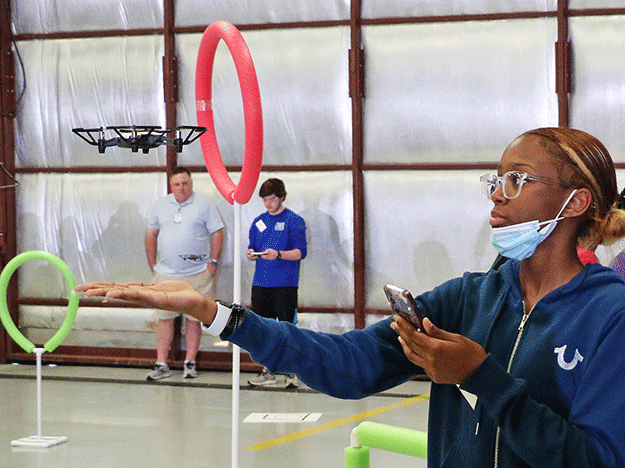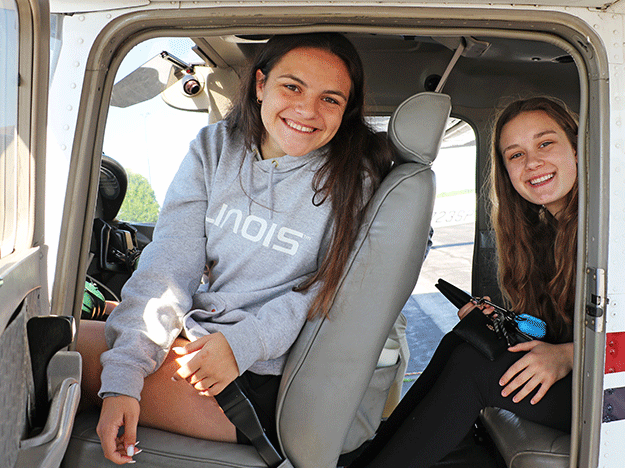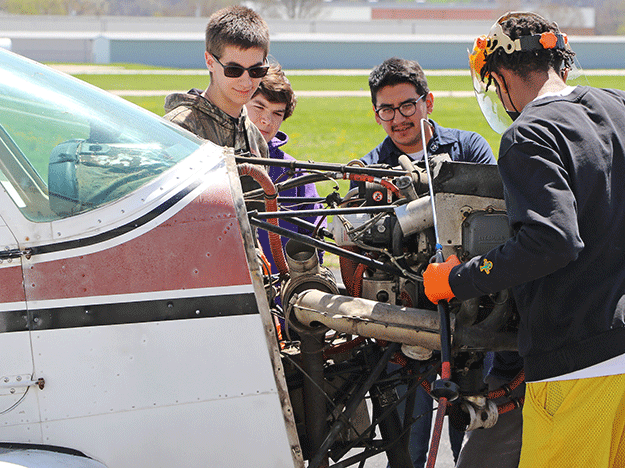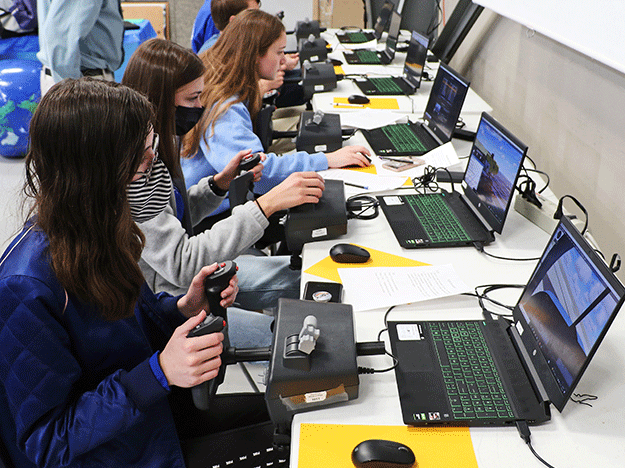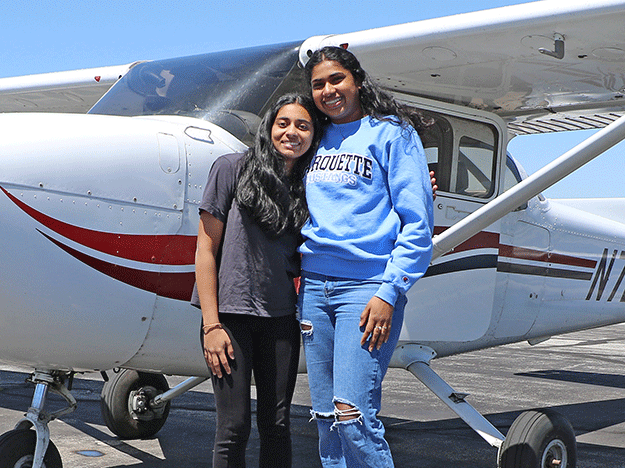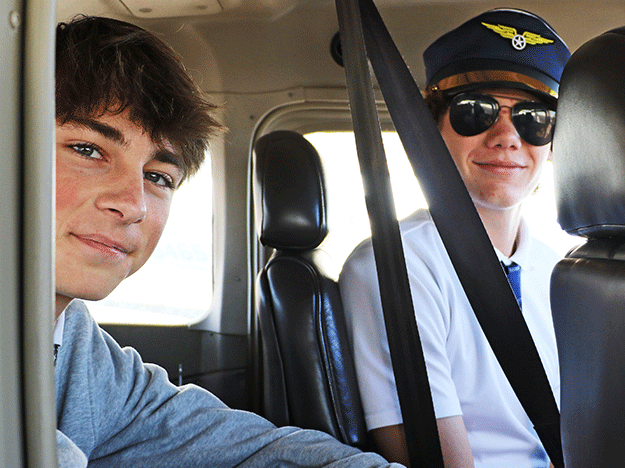Three years after launching in 2019, the spring 2022 SOAR into STEM project-based
learning experience for middle and high school students was more hands-on than ever.
Lead teacher Robert Powell, education director for the Challenger Learning Center of St. Louis, was new to program this year.
“I love sharing my passion for math, science and aviation with the students — and in my 30-plus years in education, I’ve learned that the best way to get young people excited about STEM is to give them something real to work on,” says Robert.
Srivaishnavi, a SOAR into STEM student, says before the program, she “didn’t know much about airplanes or the mechanisms of it.”
“But after seeing the amount of technology and aviation that actually goes into building it (a plane), I was more inclined toward aerospace engineering.”
During session one, 28 students from area schools explored the principles of flight. Their first project was constructing a foam glider — with moveable ailerons, flaps, elevator and rudder to maneuver the aircraft in flight.
Students and volunteer mentors then worked together to build a more advanced design glider — performing flight tests and adjusting the placement of the external weight and throwing techniques to produce the longest flight.
Jeff Rapp has been a volunteer mentor since 2019.
“Our volunteer mentors provide the students access to a wide range of aviation and STEM expertise,” says Jeff, who spent his career working in IT. “This past year, I am especially proud of the work our volunteers did creating our self-created workbook covering all four program topics to help our mentors better tailor their contributions to the program goals.”
Volunteer mentor Richard Steckel, an experienced engineer, pilot and airframe and powerplant (A&P) mechanic, kicked off session two which covered aviation communication and navigation. Richard introduced the students to avionics — cockpit displays, radios, weather radar and similar systems — designed to make flying safer. Cathy Babis, a U.S. Army veteran, pilot and former air traffic controller discussed U.S. airspace categories, air traffic control procedures and communicating using the phonetic alphabet (i.e., Alpha, Bravo, Charlie, etc.).
Students also spent time using flight simulators.
The mechanics and engineering of aviation were the focus of session three. Students worked with aeronautical charts and discussed careers in the aeronautics field and associated education paths. They got hands-on experience with the installation of an electrical system on a foam aircraft cutout. Finally, they constructed and manipulated a standard balsa wood rubber band-powered aircraft to test the effects of structure, weight and balance, and propulsion.
Wings of Hope A&P mechanic, Paul Burtis, used planes in the Wings of Hope hangar to demonstrate aircraft construction and maintenance. Students also assisted A&P mechanic Curtis Kelley with hands-on aircraft servicing tasks, including cleaning a Piper Cherokee engine with a compressed air gun.
In session four, students took a deep dive into the world of commercial and military Unmanned Aerial Vehicles (UAVs), commonly called drones. They designed their own landing pads and flew camera-equipped quadcopters through an obstacle course using an app on their phones.
The grand finale for students who completed all four sessions was taking first flight lessons in a Cessna 172S training aircraft at Elite Aviation. This was the first flight lesson for the students.
To learn more about SOAR into STEM, visit https://wingsofhope.ngo/education-outreach/soar-into-stem/.
